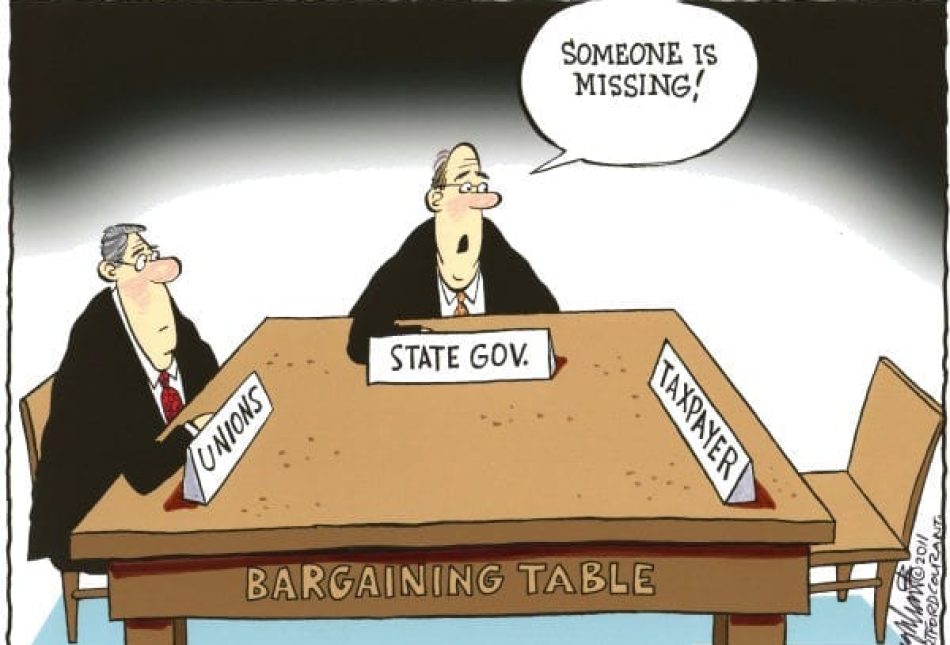Use budget surplus for tax and pension reform

The following appeared in the Las Cruces Sun-News on Sunday, September 16, 2018
![]()
The announcement that New Mexico’s budget for the upcoming fiscal year is now $1.2 billion in surplus is welcome news. After a decade of fiscal and economic challenges, there are signs of life in the Land of Enchantment.
Nonetheless, serious public-policy issues persist in our state and the wealth generated by booming oil production in the Permian Basin should not be a license for policymakers to avoid much-needed reforms. In fact, this surplus presents a unique opportunity to make serious policy changes that put New Mexico on track to prosperity and economic growth.
It was only a few months ago that Moody’s Investors Service downgraded New Mexico’s general-obligation bond rating. In its announcement, the firm noted underfunded pensions and volatile revenues as reasons for the downgrade. With a substantial surplus on their hands, lawmakers and the next governor have an opportunity to address Moody’s concerns.
Pension and tax reform are the two most urgent uses of the surplus, and promise to yield long-term benefits for which short-term costs may be incurred. Pension reform should not simply mean dumping the surplus into state bureaucrats’ retirement-income fund. Rather, serious reforms are needed (the funding situation grows worse by the year despite reform and a booming stock market) — and long overdue. Michigan is one of several states that have shifted to 401(k)-style plans. Pensions in public employment should be like they are in the private sector: flexible, affordable, and employee-controlled.
Tax reform is another critical effort that can be facilitated by the surplus. New Mexico is one of just a few states that still have fewer jobs than they did a decade ago — before the Great Recession hit. We still need new jobs and real economic growth which is too often hindered by the state’s uniquely destructive gross receipts tax.
Unlike a sales tax, much of the GRT is borne by businesses. The complexity and record-keeping aspects of the levy are bad enough, but it is imposed on numerous contractors and business inputs in ways that push them to re-locate out of state. GRT reform is bipartisan issue, enjoying support from both the Revenue Stabilization and Tax Policy Committee’s Rep. Jason Harper (R) and the Legislative Finance Committee’s Patricia Lundstrom (D).
Some would say the same could be said for plans to spend much of the surplus on New Mexico’s K-12 system and by expanding pre-K. But as a practical matter, new educational programs are recurring expenses. Moody’s has correctly noted (and anyone who follows New Mexico’s budget knows) that oil revenues are extremely volatile. Making permanent commitments to with money that may not always be available is unwise.
Also, while the big spenders are always looking for more, the benefits of increased expenditures are in doubt. New Mexico already spends more on K-12 than any of our neighbors per pupil according to the U.S. Census Bureau. But taxpayers have little to show for their generosity. In fact, our state’s 4th grade reading scores on the National Assessment of Educational Progress remain stagnant — and actually declined over the past decade.
As for pre-K funding, the headlong rush into more “early childhood education” needs a healthy dose of reality. A new study from Tennessee described as the “first large randomly-controlled trial of a state-funded pre-K program” found positive short-term effects on achievement, but these effects dissipated as children entered elementary school and turned modestly negative by third grade.
Education reform is badly needed in the Land of Enchantment. But additional funding for K-12 must be tied to systemic reforms like school-choice. And with pre-K spending having quintupled between FY 2011 and FY 2018, it seems that some real study of New Mexico’s results are in order before more resources are made available, or a push to “universal” pre-K is undertaken.
We have two inherently short-term funding needs in the form of tax and pension reform that will set our state on a path to economic diversification and success. These reforms avoid long-term commitments with money from a volatile revenue source that may not materialize.
How this surplus is used will impact New Mexico for the next generation. It is time for New Mexico policymakers to make the right choice.
Paul Gessing is the president of New Mexico’s Rio Grande Foundation.
